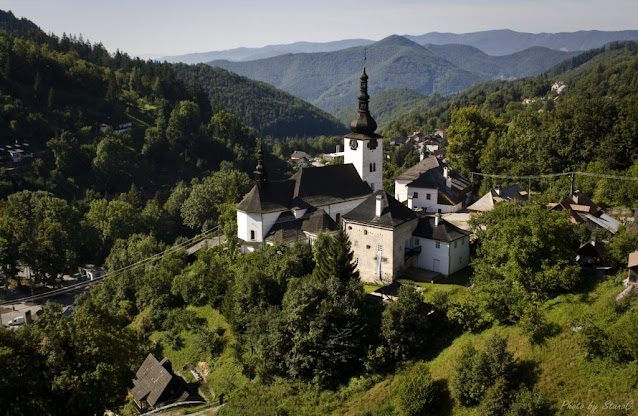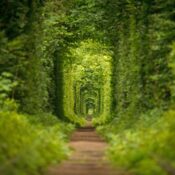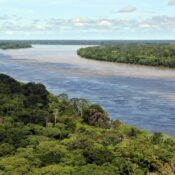Slovakia Have Also Popular Tourist Centre at Spania Dolina

Slovakia Have Also Popular Tourist Centre at Spania Dolina
Slovakia boasts a charming and popular tourist destination in the enchanting village of Spania Dolina. With its rich history and stunning scenery, it’s the perfect spot for those looking to explore the beauty of the region!
Popular Tourist Centre at Spania Dolina
Špania Dolina is a charming and historic town nestled in the picturesque region of central Slovakia, not far from the vibrant city of Banská Bystrica. Set at an elevation of 728 meters above sea level, this quaint settlement boasts a permanent population of fewer than 200 residents, contributing to its intimate and welcoming atmosphere. Surrounded by the stunning landscapes of the Staré Hory and Veľká Fatra mountains, Špania Dolina has emerged as a popular destination for tourists seeking both adventure and tranquility.
The town’s name carries rich historical significance. Its ancient Latin name, Valis Dominorum, translates to “Master’s Valley,” reflecting its noble past. The Slovak name “Špania” derives from the Latin term “spanatus,” also meaning “master,” while “Dolina” translates to “valley” in Slovak, emphasizing the town’s scenic valley setting. Additionally, its old German name, Herrengrundt, reflects the historical influence of Carpathian Germans in the area, and the Hungarian name Úrvölgy adds further layers to the town’s multicultural heritage. With its breathtaking surroundings and deep-rooted history, Špania Dolina is not just a destination, but a truly enchanting experience.
History of Spania Dolina
Ancient mining apparatuses discovered in the region of Špania Dolina have been dated as early as 2000-1700 BC, indicating the area’s long-standing significance in the extraction of minerals. Archaeological studies have revealed that copper sourced from Špania Dolina can also be traced in bronze artifacts found as far away as the Balkans and the Middle East. This evidence suggests that the local mines were integral components of a vast network of trade routes during the Bronze Age, facilitating the exchange of materials and goods across different cultures and regions.
However, the first documented mention of Špania Dolina appeared much later, in 1254, highlighting its relatively recent acknowledgment in written history. The rich deposits of copper and silver in the area attracted miners from the nearby city of Banská Bystrica. This resource allure was further amplified after 1494 when one of the first international mining partnerships was established, led by the affluent Fugger and Thurzo families. Their involvement catalyzed a mining boom in the region, drawing a multitude of foreign visitors and investors eager to partake in the wealth generated by the lucrative mineral deposits.
The Fugger family notably sponsored a laboratory for the renowned alchemist Paracelsus, showcasing their commitment to the advancement of science and mining technology. The prominent French philosopher Montesquieu later visited Špania Dolina and documented his observations about the copper mines, prompted by Isaac Newton’s interest in the region. This connection emphasizes the significance of Špania Dolina beyond mere mining, as it was intertwined with notable figures in the history of science and philosophy.
Architecture and Heritage of the Village
The town also boasts a rich cultural heritage, exemplified by the ancient craft of bobbin lace-making that flourished here, leading to the establishment of a dedicated bobbin lace school in 1883. However, the copper mines were eventually closed in 1888, marking the end of an era. Today, Špania Dolina’s economy primarily relies on tourism, drawing visitors to explore its historical and cultural sites.
Architecturally, the town features a fortified church that exemplifies both Gothic and Renaissance styles, providing a glimpse into its past. Additionally, wooden miners’ houses, which have been meticulously reconstructed, originally date back to the seventeenth and eighteenth centuries, serving as a testament to the town’s rich mining history. Among the historical landmarks is the “Knocker,” a unique bell tower from the sixteenth century, which was used to signal miners for the beginning of their workday.
Furthermore, remnants of ancient shafts and various mining-related structures are scattered throughout the surrounding forests, serving as physical reminders of the area’s historical significance. Today, Špania Dolina has transformed into a hub for outdoor activities, boasting a network of trails for hiking, mountain biking, and cross-country skiing, attracting nature enthusiasts and adventure seekers to its picturesque landscapes.

“SUPERPOBYT”, “SUPERPOBYT TRAVEL”, and “SUPERPOBYT WORLD” are active service trademarks established by the creators of “UNIWEBSITE SOLUTION”. These services are integrated and linked with the marketing initiatives of “U PRO MARKETER”, forming part of a wider network of services provided under “U FOUNDER World”. This integration enables the creation of a global business network.
The services offered are backed by legally registered businesses, specifically “DEMDERAW PRO LTD” and “UNISOL SLOVAKIA sro.”, with all rights strongly reserved for both entities.
Our operational services are organized into two strategic zones and respective countries, with each company dedicated to providing customized services to the public. We are committed to enhancing travel services and facilitating online travel, allowing customers to easily access travel information and make reservations from the comfort of their own homes.




